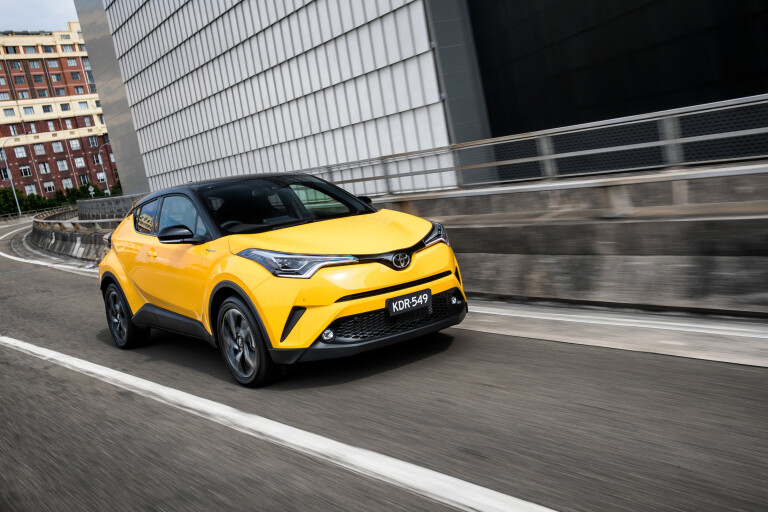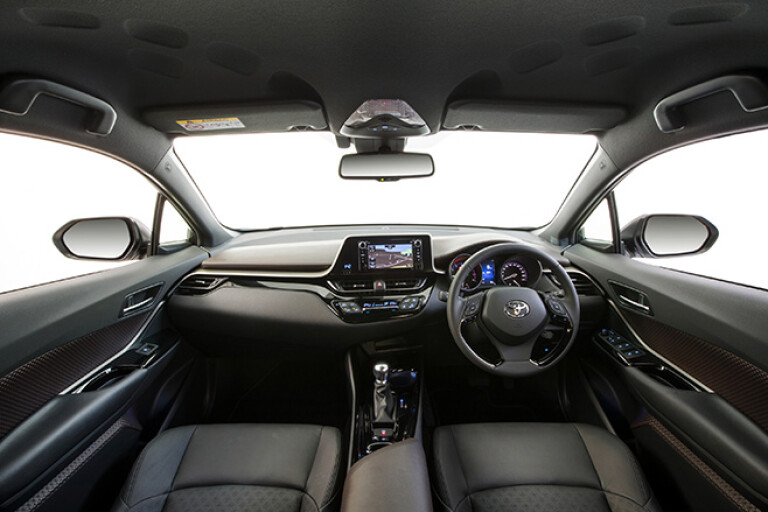
TOYOTA has one of the widest SUV ranges, however it has long lacked a compact crossover model to take on the likes of the popular Mazda CX-3 and Nissan Juke.
Enter the C-HR, Toyota’s audacious entrant into the steadily growing field of high-riding hatchbacks on Australian roads.
The eye-catching C-HR is an all-new model built on Toyota’s New Global Architecture (TNGA) platform which also underpins the Prius hybrid vehicle. But this is no jumped up Prius – it’s powered by a punchy 1.2-litre four-cylinder turbo petrol engine that produces 85kW/185Nm and provides a refined ride with adequate grunt for most situations. This is coupled with a choice of a six-speed manual or CVT automatic.
And unlike the Prius, it has a striking appearance which is a welcome departure from Toyota’s usually conservative design language. The rear-end in particular has origami-inspired folds and creases that are quite easy on the eye, though for some it is an acquired taste. The exterior aesthetics also come at the expense of rear seat occupants who have adequate space but very limited outward vision.
Price and features
The C-HR has two main equipment specs including the standard and Koba models, spread over five variants that differ depending on transmission and drivetrain. Prices start at $26,990 for the entry level front-wheel-drive CH-R with six-speed manual with the Koba AWD with CVT topping the range at $35,290.

If the entry-level pricing seems high it’s because the C-HR is brimming with standard features including advanced driver assist technology such as pre-collision safety system, lane departure alert with steering assist, sway warning system, blind spot monitor, rear-cross traffic alert and trailer sway control. Other inclusions include 17-inch allow wheels, halogen projector-type headlamps, LED daytime running lights and fog lamps, rain sensing wipers, satellite navigation, power folding heated exterior medals and a C-HR puddle lamp.
The Koba variants (named after the car’s chief engineer Hiroyuki Koba) also get keyless entry and ignition, an air purifying climate control system, leather-accented upholstery, 18-inch alloys, LED tail lamps, heated front seats, privacy glass and blue interior ambient lighting.
Pros and cons
The Toyota C-HR is a sharp looking car in more ways than one and is a good blend of style, ride comfort and Toyota reliability. It’s cheap to run too, with running costs even lower than its ubiquitous Corolla stablemate.
The TNGA underpinnings provide excellent stability with ride further enhanced by multi-link rear suspension. It feels settled on roads even through sharp bends that would have other small SUVs feeling restless.
It’s also a quiet ride, with the aerodynamic design helping to reduce wind noise while engine and road noise through the tyres is also tamed. The entry-grade’s 17-inch wheels deliver the best cabin ambience of all.
The interior is well appointed and designed to match the funky exterior with an asymmetrical dash, tombstone-style infotainment screen, comfortable seats and higher-than-average material quality. On the down side the standard 6.1-inch touch screen is small and the buttons and dials surrounding it look too busy. The USB socket is also on the screen which means a messy cable running from where your phone is stored. And the plastic cap over the USB socket will only last so long.

At the back, function has made way for form. The rear seats are reasonably comfortable with good leg room and place to put drinks, however vision is very limited with a tiny triangular window that resembles that of an armoured vehicle. And looking out becomes a mere fantasy for smaller children who won’t be able to look out front because of the CH-Rs ride-height and high-backed front seats.
Kids will also have trouble opening the back door because of the ‘invisible’ door handle mounted which is mounted high and gives the car a coupe like appearance.
The C-HR’s rear design also comes at the expense of boot space, which is a small hatch-like 377 litres.
That said, while the C-HR probably won’t be up there as a family car, it’s sure to be popular with individuals and couples seeking a stylish high-rider that stands out from the pack… for now.
The one to get
The entry-spec model comes with a host of features that would make it a mid-range variant in most other vehicle ranges. The manual is an obvious choice for those who prefer more driver input, though the CVT (a $2000 option) is reasonably refined and provides a manual shift option. The front-wheel-drive is more than adequate if most of your driving is around town.
COMMENTS